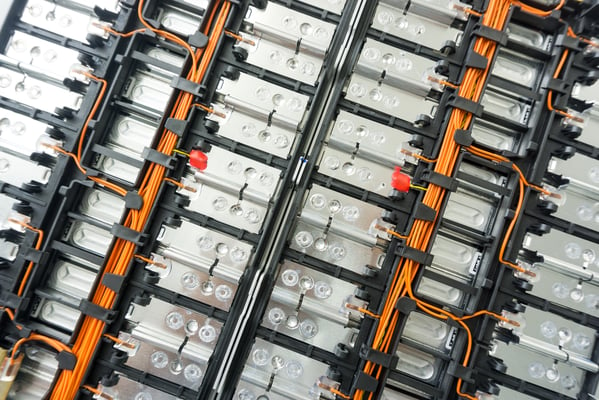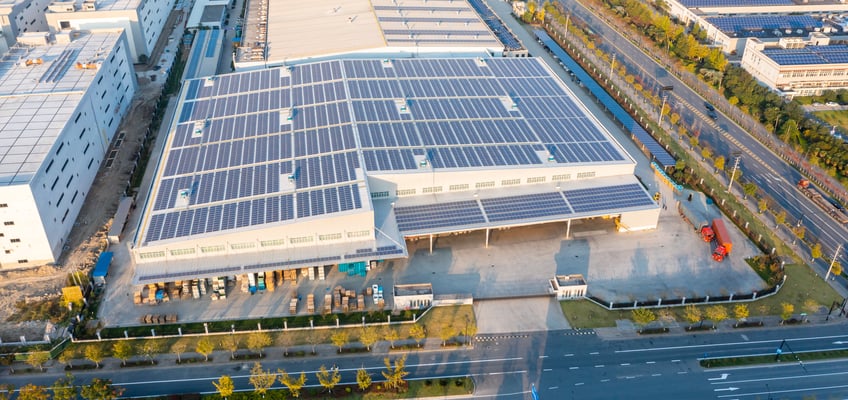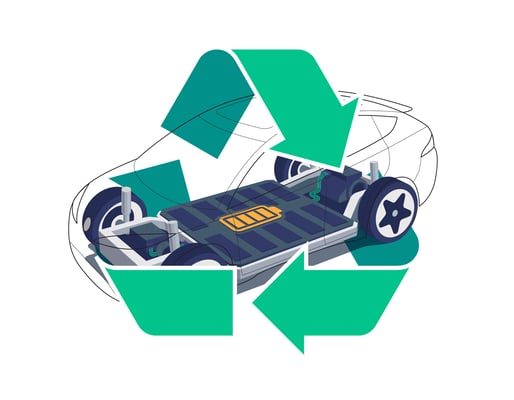.png?width=1000&name=Untitled%20design%20(21).png)
Second life battery companies - what they do and trends in Europe
The first fully electrical vehicles (EVs), like Nissan Leaf and Tesla, rolled out about ten years ago. As these batteries are coming to their end of life in cars, they can be repurposed as second-life stationary batteries.
Electrifying transportation on the way towards zero emissions
Signifying a leap in transportation, the EVs of 2012 was the first move from internal combustion engine (ICE) vehicles to electric vehicles (EVs). These EVs were considered a noveau and slightly curious thing that was practical only in cities, as the range of these cars was short.
Ten years later, it has become a global goal to electrify all transportation to reduce CO2 emissions, contributing to reaching the goal of zero emission by 2050. A lot of batteries are required for this transformation.
Degradation as the cause of capacity loss
The automotive-grade batteries used are lithium-ion batteries, which are made to endure rapid charging and discharging cycles. Due to the chemistry of these batteries, their performance degrades over time, and eventually, they reach an 80% threshold where their capacity is getting too low to be effective in EVs. At that point, the battery of a car needs to be changed.
These days, the batteries of the first EVs are coming to their end of life cycle, and what to do with them is becoming crucial.
Management of resources is crucial going forward.
Evermore of these automotive-grade batteries will reach their end of life cycles, and just throwing them away or recycling them is not good enough, considering today´s focus on the establishment of circular economies. The EU has made it a goal to make EV batteries into a fully circular economy, ensuring all resources within the batteries are recycled and reused at their end of life.
But before a battery comes to that point, it can be repurposed into a second-life battery.
Second-life automotive-grade batteries make excellent storage batteries, as they have been made to endure rapid charge/discharge cycles over the years. As these batteries reach an 80% capacity, they are no longer feasible in EVs but still have many years of service left when used as stationary battery energy storage solutions (BESS).
Second-life batteries can be used both to store energy and for fast frequency regulation (FFR) of the grid. The need for FFR is growing as more and more unstable sources of energy, like wind and solar, are becoming part of the energy mix, creating challenges with the stability of delivery of power.
End-of-life EV batteries can and ought to be given a second life in stationary applications for power storage.
Who can repurpose end-of-life batteries into second-life batteries?
Many companies, like Tesla with their Power Wall, deliver BESS. But the batteries in these solutions are brand new.
ECO STOR, situated in Norway and other companies in Europe, provide battery energy solutions based on refurbished batteries that have reached their end of life cycle in EVs.
The possibility of a circular economy of batteries
At ECO STOR we not only repurpose end-of-life batteries. At the end of life, when the battery has degraded to a point where it can no longer be used in stationary applications, we collect the batteries and make sure they are recycled. Our partners have the highest recycling percentage in the business, with a 98% grade recycling percentage.
The materials retrieved through the recycling are then used to make new batteries. This way, we have ensured a fully circular loop for the outdated batteries of old EVs at their end of life, making the best possible use of the resources.




